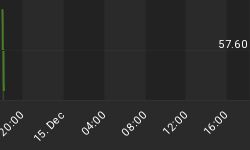In my June 2 communication I pointed out that the deep Monthly DJIA Coppock Curve buy signals of 4/28/78 and 5/30/03 are uniquely akin in that they are the only 2 since the 1920's which are not preceded within 600 trading days by the Six by Ten CI-NCI Ratio dipping to 0.9500 or less.
In my June 6 communication I showed that the 8 deep and very deep Monthly DJIA Coppock Curve buy signals since 12/1/61 pair themselves off into 4 time path patterns with respect to plotting the Six by Ten CI-NCI Ratio against the inverted Six by Ten TRIN. One of those pairs consists of 4/28/78 and 5/30/03.
Are 4/28/78 and 5/30/03 a pair mainly because of the obvious pairing of the other 6 signals?
Consider all 13 deep and very deep Monthly DJIA Coppock Curve buy signals since 3/31/25:

Consider those same 13 signals on a line chart showing the Six by Ten CI-NCI Ratio since 8/17/26:

Three of the 13 signals (8/31/32, 8/31/70, and 1/31/75) take place while the Six by Ten CI-NCI Ratio is below 0.9500.
Eight of the remaining signals (7/30/38, 6/30/41, 9/30/42, 8/29/47, 1/31/63, 4/28/67, 9/30/82, and 10/31/88) take place no more than 275 trading days after the last instance of the Six by Ten CI-NCI Ratio being at or less than 0.9500.
The remaining 2 signals (4/28/78 and 5/30/03) occur 789 and 722 trading days, respectively, after the last instance of the Six by Ten CI-NCI Ratio being at or less than 0.9500.
When the 789 trading days ending on 4/28/78 and the 722 trading days ending on 5/30/03 are plotted together on a scatter chart, using as coordinates the Six by Ten CI-NCI Ratio and the inverted Six by Ten TRIN, any shared pattern is too complex for the eye to detect.

Isolating the inverted Six by Ten TRIN helps...

...as does isolating the Six by Ten CI-NCI Ratio:

In my very unscientific opinion there is enough similarity to say that 4/28/78 and 5/30/03 are a true pair with respect to the pattern of their pre-signal time paths.
So what?
Maybe they will share a POST-signal time path pattern too.
















